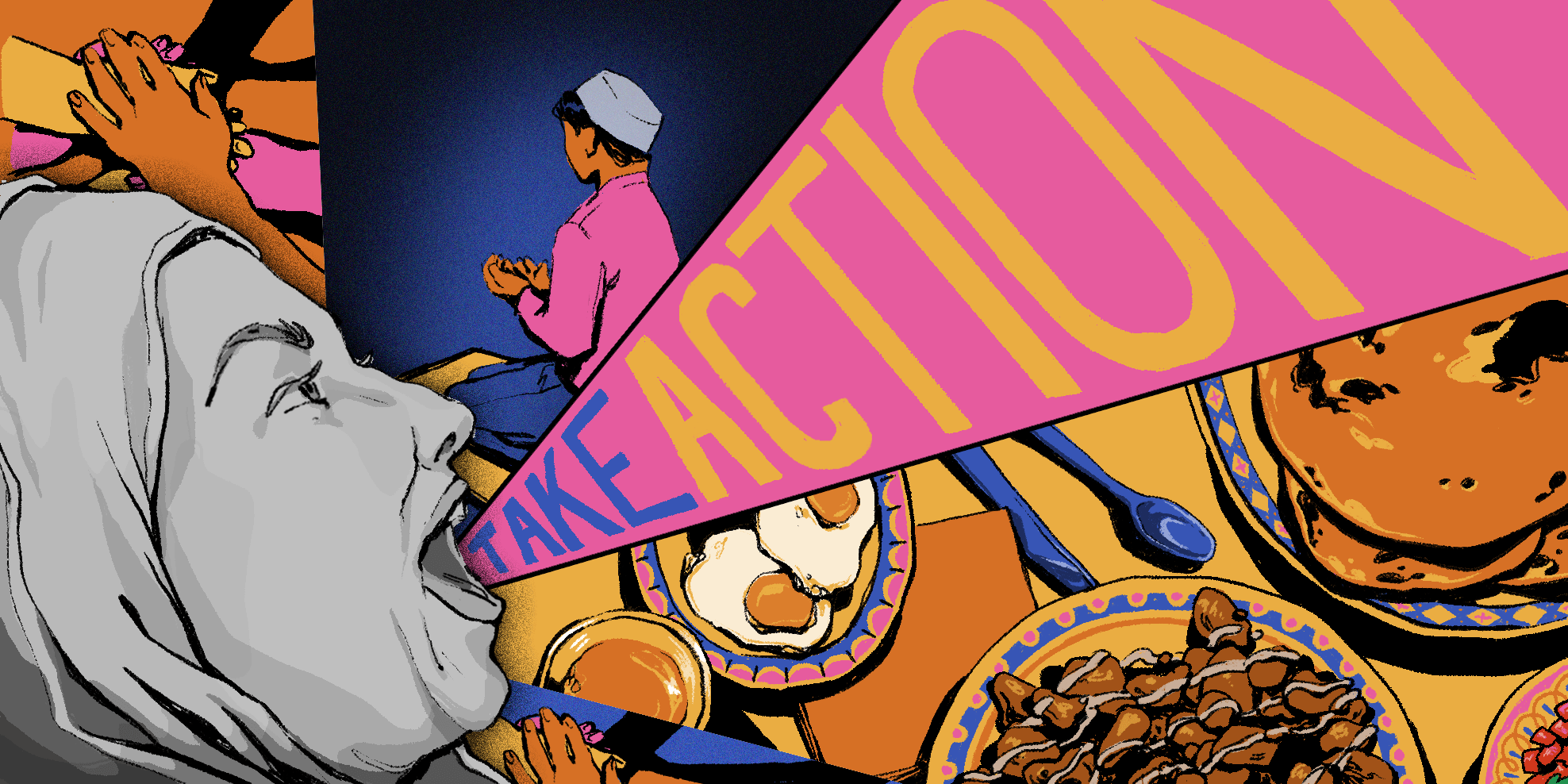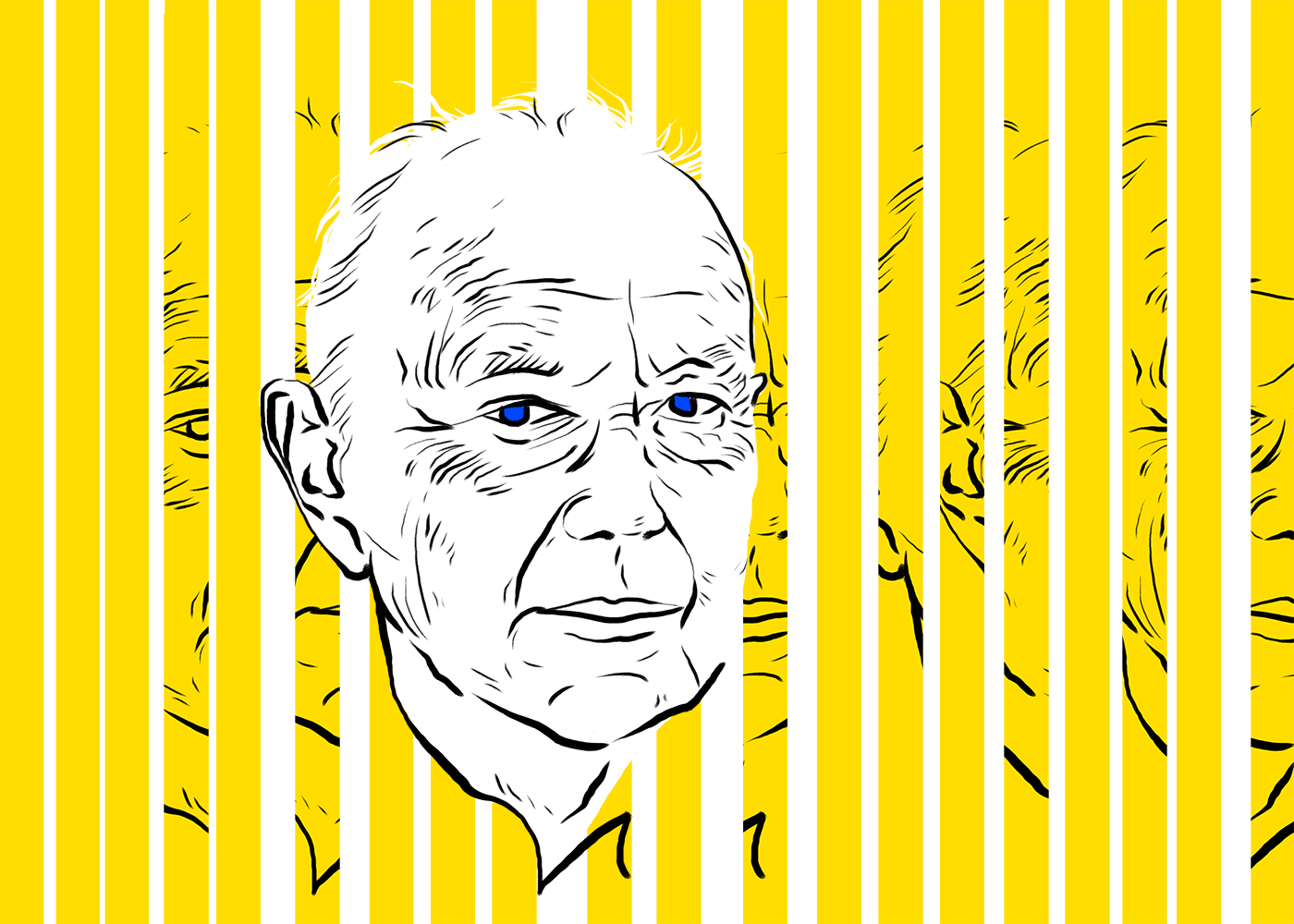
illustration by Alex Kostiw
One of my sleep-inducing, freshman-year visual object analysis assignments at the University of Iowa (UI) once forced me to actually get up and go somewhere. I had to take a self-guided tour inside the UI Hospitals and Clinics — a labyrinthian complex that we were told houses a charming collection of art that’s more or less peppered around for patient recovery. Inside, among the obligatory, didactic Grant Wood drawings — on the fifth floor somewhere between probably the gastroenterology outpatient clinic and nephrology department waiting room — was nestled inexplicably a simple, framed, silkscreened green curve thing: a yawning arch balanced convergently on a sharp, downward point; a perfectly parabolic, vividly verdant polygon saying nothing, ink on paper, and scribbled small in the bottom right-hand corner, in pencil, “Ellsworth Kelly, 1988.” It was the first time I encountered Minimalism. For me, it was an aesthetic syzygy. I thought, “I must know everything about this. And who is she, this Ellsworth Kelly?”
Well, for starters, the piece was called, simply, “Green Curve” (1988), and Ellsworth Kelly was “he.” Kelly was born in Hudson Valley, about 60 miles from New York City, in 1923. He was raised, like the vast majority of us, under totally unremarkable circumstances. He was one of three sons. His father was an insurance company executive, and his mother was a former teacher. Kelly went first to public school, then attended the Pratt Institute in Brooklyn for art in 1941 until being conscripted to fight the Nazis in 1943. Assigned to the “Ghost Army,” the United States Army’s tactical deception unit, Kelly’s service to his country involved painting various kinds of military camouflage to confuse Axis forces on the ground in Europe. His tasks included mimicking different natural patterns and imitating Axis camouflage styles — and after the war, he would consider this experience absolutely essential to his artistic training and learning. Kelly returned to study briefly at the Boston Museum School between 1946 and 1947 until he ultimately ended up in Paris, France, at the prestigious École Nationale Supérieure des Beaux-Arts. Kelly immersed himself in the art and philosophy of his contemporaries and formalized the aesthetic themes and processes that would dictate the rest of his career here: the abstraction of organic shapes, geometric and line investigations, hard-edged color field studies.
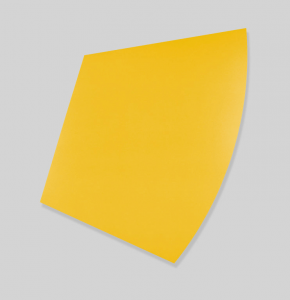
photography courtesy of the Art Institute of Chicago
It was a trip to the Musée Cernuschi that set Kelly off on his abstraction explorations; the Asian art museum’s Chinese calligraphic works resulted in a piece called “Plant II” (1949). Attempts to objectively copy foreign and indiscernible letters and words stripped them of their cultural connotations and led Kelly to admire only their inherently abstract forms.
He made his first monochromatic painting after visiting the late Claude Monet’s crumbling studio. Fifteen of the Impressionist’s massive, unfinished paintings inspired Kelly’s “Tableau Vert” (1952), which is now owned by the Art Institute of Chicago (AIC) — a gift from the artist himself in consideration of the AIC’s robust Impressionist collection. Mixing blue and green in an endeavour to capture underwater grass (à la Monet’s water lilies), Kelly actually claimed he considered this first experiment a failure and that it sat in a box for around 33 years before he looked at it a second time.
After his unsuccessful solo debut at the Galerie Amaud in Paris, Kelly returned to the United States destitute. But in 1956 and 1957, his second and third solo shows at the Betty Parsons Gallery in New York City turned the tide of American art in the way only a few events ever have — and possibly ever will. His work, paneled and simple, was the antithesis to the dominating Abstract Expressionist paradigm running gesturally rampant in drips and drizzles and drastic strokes. These shaped canvas, hard-edged color field works would crest as something fresh and challenging, as a wave the world would call Minimalism.
Within three years, Kelly was in the Whitney Museum and the Museum of Modern Art (MoMA) in New York City and exhibiting at the avant-garde Ferus Gallery in Los Angeles. The commissions began to roll in, and the decades that followed would see Kelly reiterate, hone, and perfect his reductionist trajectory until his peaceful passing at the age of 92 in December 2015. Kelly cites among his contributions to art history over 17 solo shows and 20 public installations, and his countless works are housed in permanent collections all over the world. He was awarded a National Medal of Arts, presented by President Barack Obama in 2013. But it’s Kelly’s love affair with Chicago that’s his most profound, and everything you need to understand the life and work of the great American artist is right here.
Kelly created “Curve XXII (I Will)” (1981), commissioned by Friends of the Parks for Lincoln Park (the titular “I will” referring to Chicago’s unofficial motto), a 40-foot tall, monolithic sculpture of welded stainless steel. In 1989 the AIC commissioned for its permanent collection six large pieces specifically for the Rice Building’s second floor — for wallspace outside a collection of galleries exhibiting American classics like Grant Wood’s “American Gothic” (1930) and Edward Hopper’s “Nighthawks” (1942) — that overlooks the wing’s sun-bathed, first-floor sculpture court.
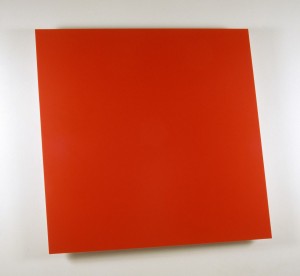
photography courtesy of the Art Institute of Chicago
The resulting artworks, “Chicago Panels” (1989-99), are each monochromatically painted, geometrically distinct aluminum wall installations: The yellow, blue, and orange versions grace the south wall and the black, red, and green panels the north wall. The minimalist creations juxtapose powerfully against the Doric columns that frame their view; they live unadorned and honestly. In 2002, then AIC Director James Cuno commissioned Kelly’s largest-ever installation in honor of longtime AIC Director James N. Wood for the Modern Wing’s interior Pritzker Garden. Architect Renzo Piano added 12 feet to the site’s wall height to accommodate the artist’s elegant plan: the invulnerable, aluminum “White Curve” (2005). The work’s final dimensions span a considerable 14 feet high and 54 feet wide.
But what could arguably be called Kelly’s magnum opus — this grand, silvery white polygonal meditation — is the exact same, perfectly parabolic curve I first encountered years ago screened smaller on like tabloid paper, innocuous in the halls of a hospital in the middle of the Midwest. This repetition of output, this calculated execution of abstracted shape and impeccable color, the kind of work Kelly was creating consistently for decades — I’ve since realized through my own visual communication study and making — is utterly timeless.
Unlike our now-oversaturated art world of referential activism, Kelly points to nothing. In a culture of disposability and overloaded information, Kelly communicates necessarily and experientially, wordlessly. His world is a world to be seen instead of described; his work is enduring because it refuses to be about anything. It, instead, is the ontological realization of the visually reduced: How line and curve beget form, how context and light beget color. After all, what does the world look like when we un-assign meaning? No thought is worth a second thought. That weird curve is a weird curve. That hue of green is a hue of green. These experiences are the simplest units of perception; Kelly’s works are absolute.
And his influence is all around us. The ground Kelly laid was e.g. later explored by artists like Robert Indiana and Richard Serra in painting and form studies, and Dan Flavin and Donald Judd in perceptual, visual experimentations. The pathway the early Minimalist, Color Field, and then Op art and Light and Space artists cleared, proves the proposition that aesthetic experiences are gateways for transcending confined awareness. Most of this work following Kelly engages heavily with this frame of dimensionality, both literally in forms of physically shaped canvases and experientially through and with the fourth dimensional operations of duration and light. The notion that the visceral reactions these mechanics breed is more valuable than discursive content threads itself through these movements and aesthetics, and, pointedly, prided as experiences viewers can only have in person. Which is why it’s so difficult (and self-defeating) to discuss them and their effects linguistically. Language fails me now. All I can really do is point and say, “Go there.”
But it’s a lesson I believe too many young artists and designers — at least the emerging creatives I meet in my practice and study — have either never been told or simply don’t care about: Minimalism is not actually about activating as few chosen elements as possible; minimalism is about the teleology of chosen elements — about their efficiency and openness. The average human eye and brain are capable together of processing over 10 million colors. How could you ever finish exploring that spectrum? Kelly reiterated, honed, and perfected. He didn’t need anything else to contain the universe — to be universal. One color can tell the whole story. One shape can change a life.
His message taught us that all art is reduction and that all reduction is capital-T truth. Here in Chicago, most recently, the AIC’s “The New Contemporary” — which opened only 15 days before Kelly’s passing — relegates an entire gallery to the artist’s painting and sculpture. It’s my favorite room in the museum, because if you look closely and long enough, the act of seeing becomes itself the act of making. Go there. We owe much more to the artist and the artwork. I’ve never been more awake.
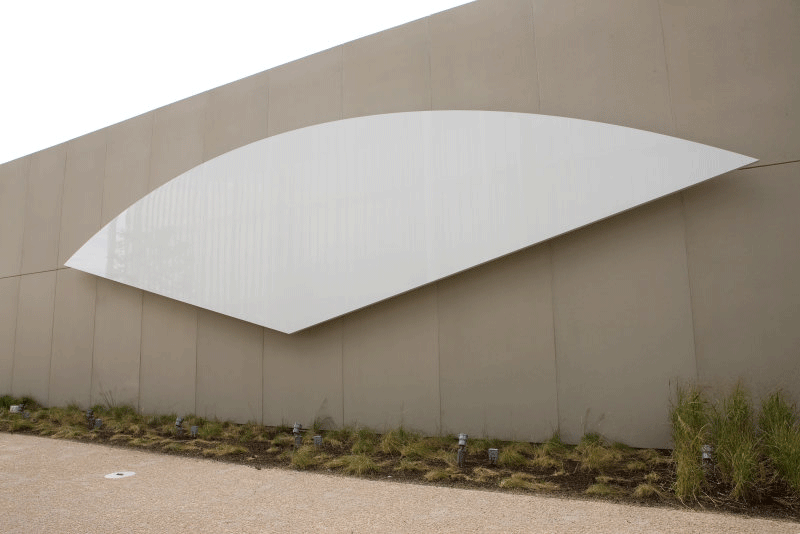
photograph courtesy of the Art Institute of Chicago






